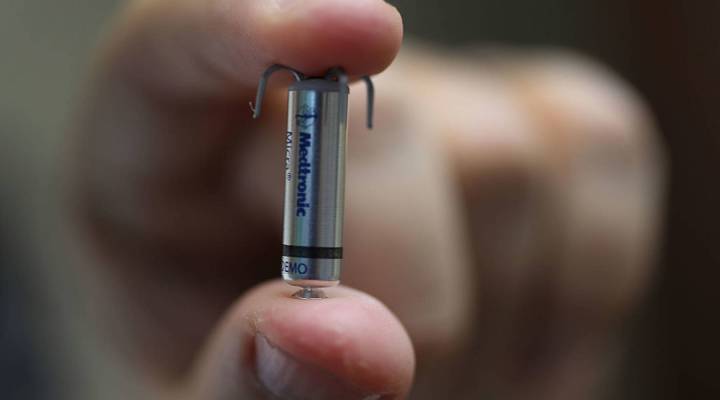
Cyborgs: we’re closer than you think
Share Now on:
Cyborgs: we’re closer than you think

Let’s play a game. It’s called, “Are you a cyborg?”
Here’s how you play:
- Have you inserted a chip or computerized medical device like a pacemaker into your body?
- Do you use any fitness tracking software or hardware?
- Are you taking antidepressants?
If you answered “yes” to any of these questions, you win. You are a cyborg.
At least, that’s the view of futurist Amy Webb, who we feature in this episode of Codebreaker, called ‘The Augmented Self’.
“The real truth is that about a quarter of us are cyborgs and we might not even realize it,” says Webb, who founded the Future Today Institute. “If you are taking any kind of antidepressant, you’re part of an experimental biohacking. It’s what we can see versus what is invisible. My uncle, when he was 16, became a cyborg. He had a heart condition and was the youngest recipient of a pacemaker.”
Generally speaking a cyborg is defined as a person, fictional or real, who has enhanced their physical abilities by introducing technology or other mechanical elements to their body.
When we think of cyborgs, most of us think of wacky science fiction so Amy’s definition might be a surprise.
This episode has a few, visible cyborgs in the realm of the extraordinary. Cyborg activists Neil Harbisson, who has an antenna fixed to his skull, and Moon Ribas, who has a sensor implanted in her elbow which allows her to feel earthquakes in real time. Steve Sanchez, a paraplegic test pilot for exoskeleton company SuitX, and Chris Dancy, who might be the most data-hungry adopter of the “quantified self” movement ever.
‘Augmented Self’ also features a skin-crawling example of how we’re willing to enlist technology to improve ourselves. Sandra Upson, executive editor of Backchannel, reported for us on a new process where hairline-challenged men in San Francisco are enlisting the help of artificial intelligence -powered robots to do hair transplants.
And, I talked to one of pop culture’s best known cyborgs: Geordi La Forge — aka Levar Burton — of Star Trek the Next Generation Fame.
“I do believe that technology, when used appropriately, can make our journey here better, easier, more enjoyable,” Burton says.
Augmented Self: Listen, decode and decide.
There’s a lot happening in the world. Through it all, Marketplace is here for you.
You rely on Marketplace to break down the world’s events and tell you how it affects you in a fact-based, approachable way. We rely on your financial support to keep making that possible.
Your donation today powers the independent journalism that you rely on. For just $5/month, you can help sustain Marketplace so we can keep reporting on the things that matter to you.


















